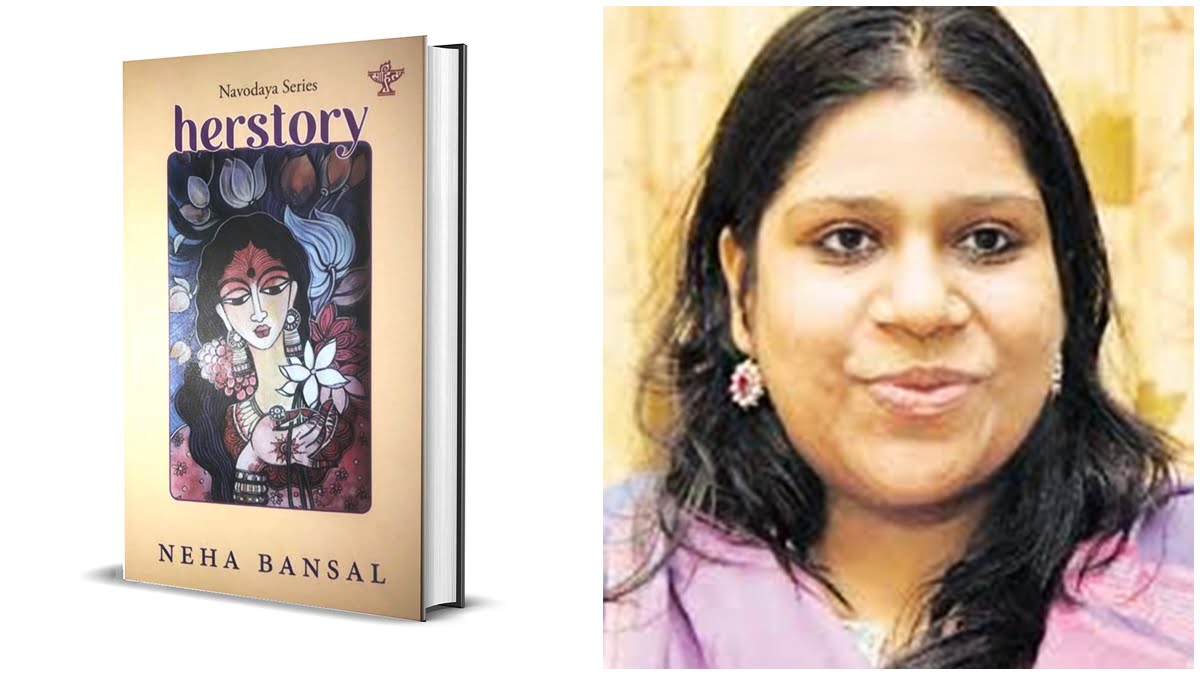“If the owner of the seeds would not
Accept his harvest, why can’t I be
Both the field and celebrator of my harvest?”
– The Unwed Mother
The upper class men are historically believed to have got the first-mover advantage in writing the history (or his story) and gender roles in India. As mothers, sisters, wives or other characters whose identities are only projected as associated with men, ‘ideal’ women were expected to sacrifice their desires with grace and joy. IAS Neha Bansal’s debut work ‘Herstory’ through a collection of 39 narrative poems, encapsulates the gamut of women’s experiences and critiques their systematic oppression. The intertwining journey through mythology and contemporary times flags the suppressed regular battles of women from “womb to tomb”, without exempting the women for becoming oppressors and carriers of the patriarchal legacy.
Also read: Book Review | The Wheat Fields Still Whisper: Mallika Kaur Traces Violence In The Punjab Conflict
As mothers, sisters, wives or other characters whose identities are only projected as associated with men, ‘ideal’ women were expected to sacrifice their desires with grace and joy. IAS Neha Bansal’s debut work ‘Herstory’ through a collection of 39 narrative poems, encapsulates the gamut of women’s experiences and critiques their systematic oppression. The intertwining journey through mythology and contemporary times flags the suppressed regular battles of women from “womb to tomb”, without exempting the women for becoming oppressors and carriers of the patriarchal legacy.
“…Women are but passive vessels
To hold the brave seeds
She (Renuka) will corrupt your wives’ minds
And soon they will talk about their needs.”
– Renuka
Women in India have been eulogised through several mythologies for ages to play a certain predetermined role in the society. Yet, they are also blamed simultaneously for downfall of kingdoms, for starting wars, etc. Quoted more often are the burning down of the Lanka kingdom in Ramayana for Sita and the bloodbath of Kurukshetra in the Mahabharata for Draupadi. What is conveniently subsided in these narratives is the conduct of the king Ravana and that of Duryodhana, or for that matter, the rationale of the Pandavas gambling their wife. Since these women were never allowed a chance to make their fair case, in the original texts or in several adaptations later, Bansal attempts to give a befitting response to all those fingers alleging women’s “selfishness” as the root cause of all the evil in the world. Bansal’s Draupadi and Yashoda do not sit cross-legged and embrace the praises; they seek answers to the unjust abandonment. Unlike the caricaturing and ignorance by the mainstream, she has also given breath of life to other powerful women characters of mythology: Renuka, Urmila, Hidimbi, Ahalya, Surpanakha and Mandodari.
“The following day, they were to leave,
The mother and the brothers five.
And clearly the tribal mother-son duo
Didn’t belong to Hastinapur’s high life.”
– Love Song of Hidimbi, the Forestdwelling Wife of Bheema
Beginning from the struggle to come to life, bearing with the continuous gender bias, the politics of blue and pink, suffering the rituals around menstruation, pressure to comply with pre-agreed looks, fearing to claim public space as her male counterparts, the placement of family honour in her vagina, silent adherence to the spouse’s non-consensual fantasies, the postpartum blues, and no agency of choice or control over her body and her sexuality: such is the daily life of most women in India. And then, there are the socially unaccepted women: the widows, the barren women, the unwed mothers, the Dalits, the sex workers! ‘Herstory’ has snippets from all of these lives.
The author has used unnoticeable scenes of Indian families to highlight the hypocrisy within: like all the preparations to welcome arranged-marriage prospects and the boy managing to see the “besan-cured” girl in the backdrop of hushed dowry negotiations; the post nuptials games in the wedding and the minute inspection of white bedsheet the next day; the onus of birth control on the women, and so on.
The author has used unnoticeable scenes of Indian families to highlight the hypocrisy within: like all the preparations to welcome arranged-marriage prospects and the boy managing to see the “besan-cured” girl in the backdrop of hushed dowry negotiations; the post nuptials games in the wedding and the minute inspection of white bedsheet the next day; the onus of birth control on the women, and so on.
It is a relief when a woman realises her fraternity’s role in becoming the victim as well as the pawn of patriarchy. It’s a boon when a public servant reflects on these women over and beyond their man-made identities. Bansal has penned a woman’s perspective to every violence normalised by the traditional male gaze. Her verses can also be seen as an attempt to out the whispered uprising amongst the women to the galore.
Also read: Book Review: ‘Beyond #MeToo: Ushering Women’s Era or Just Noise?’ By Tanushree Ghosh
I’d rather want a promise that
You won’t deem me a property
To be protected till you hand me
Over to my rightful owner!
– Raksha Bandhan
Swati reviews policies and literature on Social Justice. She can be found on Instagram, LinkedIn and Twitter.





Wonderful article. I have read the book and I think it should be mainstreamed. It must be read by every woman worth her salt and every man who is proud of all the women in his life.
Great article. Very well written.
It is indeed a beautiful book. This article is very written too and aptly describes the book. Please give the book a chance.
It’s a very well written review of a very good book. More strength to our women writers